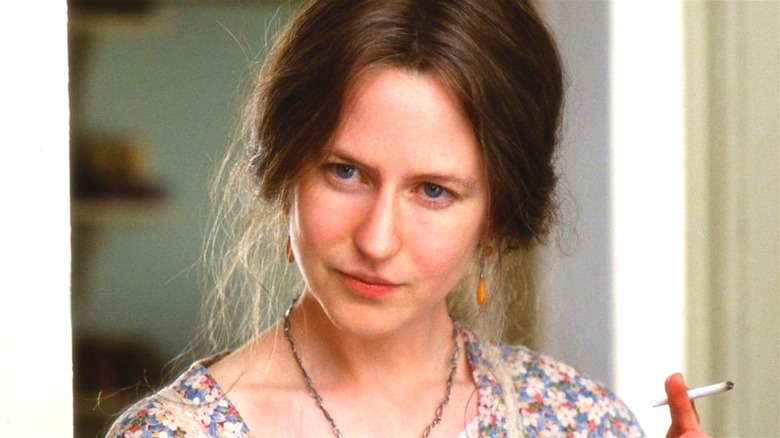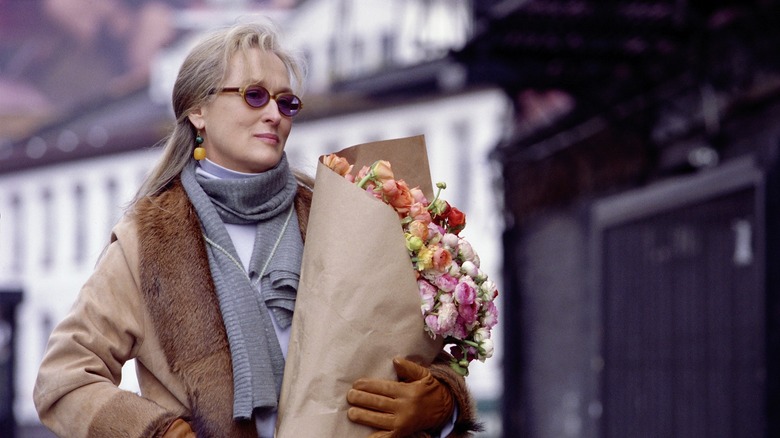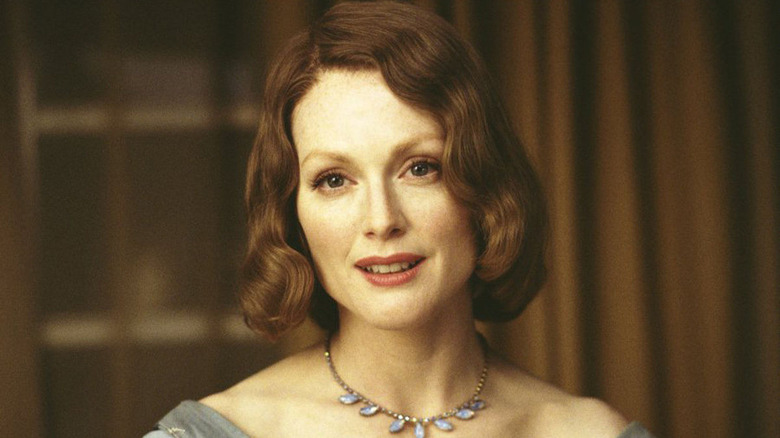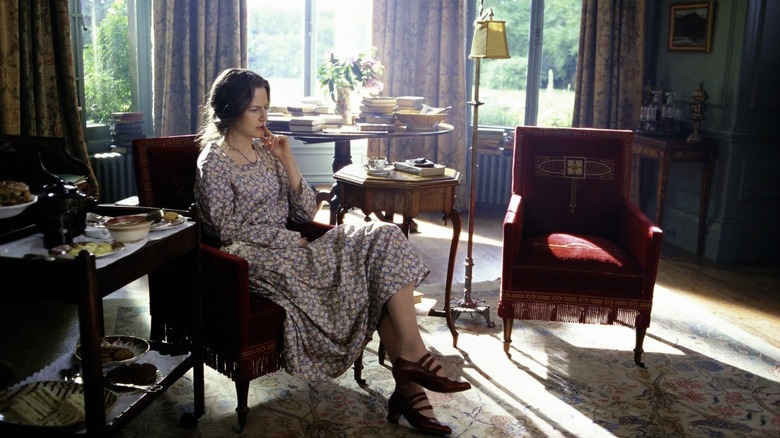The Ending Of The Hours Explained
Because it was a heavy-hitter at the Oscars the year it came out, and because it's based on a novel of the same name, "The Hours" has gained a reputation in some circles for being a boring prestige movie. Although the film has its detractors, "The Hours" also has plenty of loyal fans who defend it and the structure that defines it. The film follows three women, largely over the course of a single day at different periods in history. Their stories are interconnected by the 1925 novel "Mrs. Dalloway" by Virginia Woolf.
Woolf, played in the film by Nicole Kidman, is one of the women at the film's center. The other two are Clarissa Vaughan (Meryl Streep), a woman living in Manhattan in 2001 who is planning a party for her friend Richard (Ed Harris), who is suffering from AIDS, and Laura Brown (Julianne Moore), a pregnant 1950s housewife who's in an unhappy marriage and already has one child. The film's three-tiered structure calls out the similarities and differences between each woman's story and finds plenty of moving moments in each.
The film's ending, which mirrors its opening, breaks from that overall structure, though, to highlight a different moment in Woolf's life.
Virginia Woolf commits suicide at the end of the film
The first and last scenes of "The Hours" break from the single-day narratives that take up the bulk of the story. Woolf's story in the film is primarily about her struggle with depression as she writes "Mrs. Dalloway" and how that struggle affects her over the course of a single day. In its closing moments, though, the film depicts Woolf's suicide in 1941 and features a voiceover in which she thanks her husband Leonard (Stephen Dillane) for loving her. "Always the years between us. Always the years. Always the love. Always the hours," she says.
The film's other two narratives also intersect in their closing moments. Laura's storyline resolves after it becomes clear that she has chosen not to kill herself, and Clarissa's storyline plays out in the aftermath of Richard's suicide near the end of the film. It's after Richard's death that it becomes clear that Laura was Richard's mother, and the young boy we see in the 1950s storyline grows up to befriend Clarissa.
In connecting two of the three narratives at the center of the story, "The Hours" reveals the ways in which lives intersect, and the role love plays in the decisions every person makes.
If you or anyone you know is having suicidal thoughts, please call the National Suicide Prevention Lifeline at 1-800-273-TALK (8255).
All of the main characters in The Hours are repressed
One of the major throughlines in "The Hours" is the way each of the story's three main characters are kept from fully being who they want to be. Because of her depression, Woolf has been moved out to the country, where she is under the constant eye of her husband and servants. Woolf longs to return to London, and it's only after she and her husband have an honest discussion that she finally convinces him to move back.
Laura, meanwhile, is attracted to women but has been forced to repress that impulse. Her husband (John C. Reilly) is not cruel or mean, but she's not attracted to him and clearly feels boxed in by the life she's found herself leading. Clarissa is a more independent character who finds herself boxed in by her obligations to those around her and her belief that she needs to be constantly present for the people in her life without thinking about herself. Ultimately, the resolution of all three storylines involves a lightening of each character's repression, even if their problems are not completely solved.
The Hours is about finding a reason to live
Although the final moments of "The Hours" depict a suicide, the film is nonetheless hopeful about what life can bring with it. Even in this final scene, Woolf is expressing gratitude for all the time she got to spend with her husband and for his dedication to her throughout their relationship.
Laura expresses a similar sentiment at the end of the 2001 portion of the film, explaining that she had to leave her family after the birth of her daughter. As she explains it, her choice was between staying and killing herself or leaving and staying alive, and she "chose life." It's a decision that she knows is impossible to understand but one that she nonetheless knows she had to make.
Virginia Woolf's story ends with her death, but "The Hours" balances that story out with others about facing a difficult future and choosing to live in spite of it. It certainly isn't a cheery movie, but it's one that features an ending in which living is a possibility, even if it brings hardships with it.



